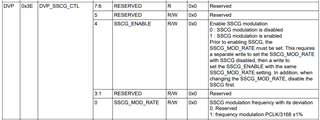Tool/software:
Hi FPD Link team,
Here are some questions from my customer, please help to answer, thanks~
1. My customer system is UB933-UB934, they want to test Eye-Diagram, could you please tell us what we need to care about?
2. They wonder if our UB933 has output driver slew rates limited? What are the maximum slew rates for dV/dt and dI/dt?
3. Do we have recommended slew rate configuration considered to meet EMC performance?
Best Regards,
Jack


